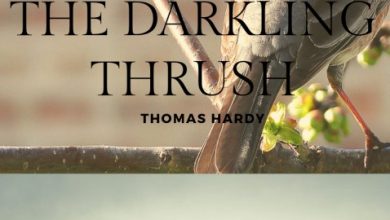The Lorax by Dr. Seuss is a well-known children’s book published in 1971. The story addresses themes of environmentalism, conservation, and the consequences of unchecked industrialization. The book’s message about taking care of the environment and the balance between progress and conservation has made it a classic and a favorite for discussing these important issues with young readers.
The Lorax | Summary
The story begins in the Truffula Tree Valley, a lush and vibrant land where colorful Truffula Trees grow. These trees produce soft, versatile tufts that the Bar-ba-loots use to make their clothing. The Swomee-Swans fill the air with beautiful songs, and the Humming-Fish swim in the clear waters of the ponds. Life is harmonious and bountiful in this valley. However, the tranquil existence of the valley is disrupted when the Once-ler arrives. The Once-ler is an ambitious and enterprising character who sees the potential for profit in the Truffula Trees. He sets up a business manufacturing “Thneeds,” a versatile item that can be used for various purposes. In his pursuit of success, the Once-ler begins chopping down Truffula Trees to harvest their tufts, showing little concern for the environment.
As the Once-ler’s business expands, the Lorax, a small, mustached creature who speaks for the trees, arrives to protest the destruction. The Lorax tries to reason with the Once-ler, warning him of the dire consequences of his actions on the environment. However, the Once-ler dismisses the Lorax’s concerns and continues his operations, blinded by greed and success. Despite the Lorax’s repeated warnings, the Once-ler’s business booms, leading to the rapid deforestation of the valley. The clear-cutting of the Truffula Trees leads to soil erosion, polluted water, and a decline in the quality of life for the animals who call the valley home. The Bar-ba-loots, Swomee-Swans, and Humming-Fish struggle to find food and a clean environment.
As the environment deteriorates, the Lorax eventually sends the Once-ler away, leaving behind a desolate and polluted wasteland. The Once-ler, now remorseful and regretful, hands the young boy the last Truffula Tree seed and urges him to undo the damage that has been done. The boy represents hope for the future and the potential for change.
The story ends with a powerful message as the young boy, armed with the Truffula Tree seed, contemplates the Once-ler’s tale. He realizes the importance of taking care of the environment and vows to undo the damage that has been done.
The Lorax | Story Analysis
“The Lorax” by Dr. Seuss is a captivating children’s book that engages young readers through its imaginative world and colorful characters. The story follows a young boy’s quest to uncover the mystery of the Lorax and the Once-ler, making it inherently interesting to children due to its sense of adventure and discovery.
The narrative introduces conflicts that children can explore and relate to. First, there is the conflict between the Once-ler’s profit-driven actions and the Lorax’s concerns for the environment. This conflict introduces children to the concept of decision-making and its consequences. The Once-ler’s disregard for nature’s welfare creates a sense of tension, as children witness the negative impact of his actions on the ecosystem and the animals that inhabit the valley. Furthermore, there is a conflict between the Once-ler’s immediate success and the long-term sustainability of Truffula Trees. This conflict prompts children to consider the balance between short-term gains and the well-being of the environment. The Once-ler’s greed and the Lorax’s efforts to intervene create a dynamic interplay that keeps young readers engaged.
The resolution of the conflicts is layered with lessons for children. The Once-ler’s eventual realization of his mistakes and his handing over of the last Truffula Tree seed to the young boy signify redemption and the potential for change. This resolution showcases the importance of acknowledging one’s errors and taking responsibility for them. Additionally, the young boy’s role as a hopeful and proactive agent of change demonstrates the power of individual actions. The story concludes on a note of optimism, inspiring children to consider their impact on the world around them and to take steps toward positive change.
The Lorax | Characters
The Lorax is a central and iconic character in the story, symbolizing the voice of the environment and nature itself. Throughout the story, the Lorax represents the conscience and wisdom that speaks against destructive actions driven by greed. He serves as a voice of reason, attempting to dissuade the Once-ler from his relentless pursuit of profit at the expense of nature. The Lorax’s character embodies the themes of environmentalism, conservation, and sustainability, making him a moral compass for both the Once-ler and the readers.
His role as an advocate for the environment positions him as a sympathetic and relatable character, as he showcases the concern many people have for the impact of human activities on the planet. The Lorax’s departure from the valley as a result of the Once-ler’s actions represents the consequences of neglecting the environment. Ultimately, the Lorax serves as a reminder of the importance of responsible stewardship of nature.
The Once-ler, on the other hand, is a complex character who represents the human inclination towards progress, innovation, and profit. Initially depicted as an enterprising and ambitious individual, he seizes the opportunity to create a successful business by manufacturing Thneeds from the Truffula Trees’ tufts. The Once-ler’s character is characterized by his ambition and entrepreneurial spirit, but also his shortsightedness and disregard for the environment. As the story progresses, the Once-ler’s actions highlight the conflict between short-term gain and long-term consequences. He is driven by greed and the allure of success, which leads him to ignore the warnings of the Lorax and prioritize his gains over the well-being of the ecosystem. This makes the Once-ler a multifaceted character, illustrating how individuals can become blinded by their desires and inadvertently cause harm.
The Once-ler’s eventual regret and remorse for his actions add depth to his character. He becomes a cautionary figure, showing how choices made in pursuit of personal gain can lead to irreversible damage. His act of handing over the last Truffula Tree seed to the young boy signifies his recognition of the need for change and redemption.
The Lorax | Themes
The central theme of the story revolves around environmentalism and the importance of preserving nature. The Once-ler’s actions and the Lorax’s protests highlight the consequences of unchecked industrialization and the destruction of natural resources.
The Once-ler’s pursuit of profit and his disregard for the environment symbolize the negative aspects of greed and consumerism. The story raises questions about the ethics of prioritizing personal gain over environmental responsibility.
The story explores the concept that every action has consequences. The Once-ler’s initial decisions to cut down the Truffula Trees lead to a cascade of negative effects, such as pollution, habitat destruction, and loss of biodiversity.
The conflict between the Once-ler’s business expansion and the Lorax’s concerns emphasizes the need to find a balance between progress and conservation. The story prompts readers to consider the impact of human activities on the natural world.
The Once-ler’s eventual regret and realization of his mistakes highlight the theme of redemption. His transformation from a profit-driven individual to someone who acknowledges the need for change underscores the possibility of growth and positive transformation.
The story underscores the idea that individual actions can have far-reaching consequences. The Once-ler’s choices affect not only the environment but also the animals and other creatures that depend on it.
The presence of the young boy at the end of the story symbolizes the potential for positive change carried by the next generation. His possession of the last Truffula Tree seed signifies the importance of nurturing hope and taking responsibility for the future.
The Lorax | Setting
The setting of “The Lorax” by Dr. Seuss is a whimsical and fantastical land known as the Truffula Tree Valley. This imaginative landscape serves as the primary backdrop for the story’s events. The Truffula Tree Valley is characterized by its vibrant and colorful environment, featuring unique flora and fauna created by Dr. Seuss’s distinctive artistic style.
In the Truffula Tree Valley, the landscape is dotted with Truffula Trees, which have colorful tufts at the tops. These trees are not only visually striking but also play a significant role in the story’s plot as they are the basis for the Once-ler’s Thneed manufacturing business. The valley is also home to various creatures, including the Bar-ba-loots (bear-like animals), Swomee-Swans (birds that sing beautiful songs), and Humming-Fish (fish that hum in the water). These creatures interact harmoniously with the environment until the arrival of the Once-ler.
As the Once-ler’s business grows and the Truffula Trees are chopped down, the setting gradually transforms from a lush and diverse ecosystem into a polluted wasteland. The deterioration of the Truffula Tree Valley mirrors the environmental degradation caused by the Once-ler’s heedless exploitation of resources.
The Lorax | Illustrations
Dr. Seuss’s illustrations are characterized by their whimsical, imaginative, and fantastical nature. The characters, landscapes, and creatures he creates are often exaggerated and unconventional, with vibrant colors and intricate details. The illustrations feature a playful and almost surreal quality, which aligns well with the fantastical elements of the story. The characters’ distinctive appearances, such as the Lorax’s mustache or the Once-ler’s oversized arms, contribute to their memorable and iconic images. The illustrations captivate readers of all ages, especially children, by creating a visually rich and enchanting world. The vibrant colors and imaginative creatures hold the attention of young readers and draw them into the story.
The illustrations convey a wide range of emotions, enhancing the readers’ connection with the characters. The Lorax’s concerned expression and the Once-ler’s evolving demeanor are visually depicted, allowing readers to understand the characters’ feelings and motivations. The illustrations vividly portray the transformation of the Truffula Tree Valley, from its initial lush beauty to its later state of devastation. This visual representation underscores the environmental themes of the story, making the consequences of the Once-ler’s actions even more impactful.
Dr. Seuss’s illustrations often carry symbolic meaning. For instance, the Truffula Trees and the Once-ler’s factory symbolize the balance between nature and industry. The illustrations visually reinforce the thematic messages, allowing readers to interpret and connect with the story on multiple levels. The illustrations contribute to the flow of the story, aiding comprehension, and pacing. The visual depiction of the Lorax’s warnings, the Once-ler’s business growth, and the changes in the environment help guide readers through the narrative.
Dr. Seuss’s illustrations are known for their playful details and hidden surprises, encouraging readers to explore each page and discover hidden gems. This aspect of the illustrations adds an interactive and educational element to the reading experience.
The Lorax | Other Considerations
“The Lorax” encourages discussions about topics related to environmentalism, conservation, and responsible decision-making. The story’s themes of greed, consequences of actions, and the balance between progress and conservation provide ample opportunities for children and adults to engage in meaningful conversations about their roles in caring for the environment.
The story presents multiple perspectives and values. The Once-ler’s perspective represents the drive for economic success and innovation, while the Lorax represents the importance of environmental conservation as well as the dangers of uncontrolled greed. These conflicting viewpoints open doors for discussions about differing priorities and the ethical considerations associated with them.
“The Lorax” is generally considered age-appropriate and is intended for children. Dr. Seuss’s engaging storytelling style, creative language, and whimsical illustrations help convey complex themes in a way that young readers can grasp. The story’s central concepts about protecting the environment and making responsible choices are presented in a manner that encourages exploration and learning without overwhelming young readers.
While “The Lorax” primarily focuses on environmental themes, it indirectly promotes an understanding of our diverse society by addressing broader issues related to responsibility, decision-making, and the interconnectedness of human actions and the natural world. The story’s lessons about the impact of actions can extend to broader discussions about the importance of considering diverse perspectives and the consequences of our choices.


